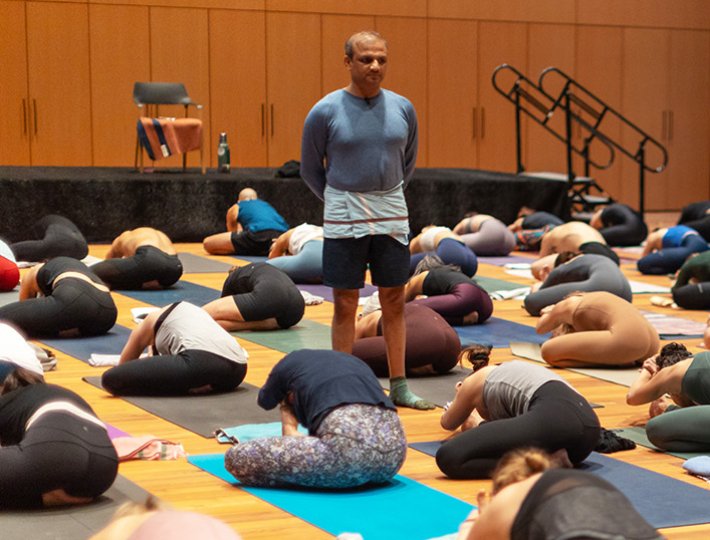For our benefit, the “state of yoga” has been described in ancient texts, like the Upanishads, which says yoga is a method to connect jīvātmā, the inner soul, to paramātmā, the higher soul. In Patanjali’s Yoga Sutra, the second sutra (“yogas citta vritti nirodhah”) says that when you are in a state of yoga, all misconceptions (vrittis) disappear. Both of these meanings go hand-in-hand. To connect to the supreme, or the higher soul, your mind must be free from all delusions.
Likewise, many yoga philosophers say yoga is within you. The supreme is within you. Therefore, the state of yoga is to realize the supreme inside you. So how do we connect to the supreme soul?
Most people are caught up in so many delusions, which won’t allow them to understand their inner purity. I love children because just to see a child or to carry a child is like carrying the divine. He or she is untouched by anything. There is no greed, no envy. But as we grow into adults, we become consumed with delusions and this inhibits our pathway to samadhi, the final limb of the eight-limbed Aṣṭāṅga method.
Related: The Eight Limbs of Yoga Explained
Ancient texts have identified six poisons, or arishadvargas, that we must rid ourselves before we can see the divine. They are kaama (lust), krodha (anger), moha (attachment), lobha (greed), matsarya (jealousy) and mada (pride). We are not born with these things, but over a period of time, we get influenced by all of them, and they stay within us. Greed comes, lust comes, anger comes. In fact, these poisons can consistently grow within us. This is not good. This is not healthy. A person might be physically healthy, but mentally, he or she is not healthy. This is why āsana is only one part of the Aṣṭāṅga method. A healthy body cannot realize the divine if the mind is not healthy.
Aṣṭāṅga yoga is a method to understand your inner self. Through the eight limbs, we can rid ourselves of the six poisons. He or she who tries to get rid of all these things, we call them a sādhaka. A sādhaka is more than a practitioner. He or she is focused on how to eliminate the six enemies within. This effort, when undertaken, is called sādhanā. Sadhana is the state of the yogi. A sādhaka lives differently because he is striving to a higher level of being. Through dedication and devotion to his goal, his perception changes, his views change, his thoughts also change—everything will change within him as he goes to higher levels. Yoga liberates us from the poisons within ourselves. The purification happens in the body as well as the mind.
A yogi is untouched by poisons. This is the purpose of doing yoga and this is the state of a yogi. We must always put more effort towards this through dedication and devotion to experience clarity within ourselves. It doesn’t matter where you are. If you come to Mysore and you don’t see me, you’ll think yoga doesn’t happen. Then you’ll start blaming me. “I went to Mysore, you were not there, and yoga didn’t happen,” you might say. But yoga is within you. The supreme is within you and all of us.
Photography by Jesse Gordon









Comments (0)